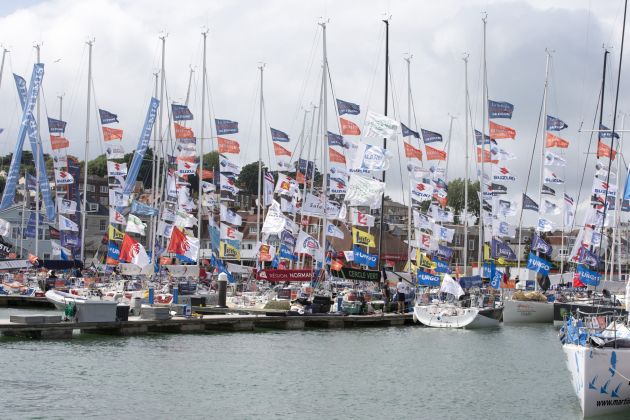|
Having barely had time to recover from one of the hardest opening stages in the long history of La Solitaire Bompard Le Figaro, the 39 skippers in this four-stage solo grand prix are now readying to leave on stage two. |
|
The first leg was dominated by tricky tidal gates along the English south coast that – combined with fickle wind conditions – caused huge splits in the fleet. The second 435-nautical mile leg is likely to be a case of more of the same. Setting sail from Cowes at 15.00 hours tomorrow on what is likely to be a busy Solent at the height of the summer, the mainly-French fleet of skippers in Beneteau II one-designs will take the first of the west-going ebb tide to the Needles at the beginning of a 200-mile beat to the Carn Base cardinal mark off Land’s End. From there the sailors will make their second traverse of the English Channel – downwind – as they head south towards Ushant. At this point, with lack of sleep starting affect the skippers, the really tough part of this classic stage begins as the route takes them through the mythical Chenal du Four. Then they continue south across the Iroise Sea off Brest – in a slightly simplified course than originally planned – before looping back to the finish at Paimpol in Brittany. But long before tackling that part of the course, the first goal will be to get past Portland Bill – the first of a series of big tide gates on the way towards Land’s End. Weatherwise the opening stages look to be to windward in a moderate westerly airflow with the prospect that the breeze will swing to the northwest. Strong winds from the west, with powerful currents and a heavy swell, will make the sector around Ushant a big handful. Race director Gilles Chiorri says the opening beat is going to be another big challenge for the single-handers. “They will have to keep their boat safe in quite choppy and lumpy conditions particularly on Sunday,” he said. “Then the pattern of wind conditions looks a bit more steady compared to leg one, so working out a strategy should be a little easier. But again the tide and tidal gates will be quite important – and missing them will be costly.” Not unlike last year, the opening leg resulted in such a wide spread in the fleet, in an event determined by total elapsed time for all four legs, that many sailors have already concluded that they are out of the overall running. Instead they will look for the best finishes they can muster in each of the three remaining legs and we may see bigger risks being taken by skippers who feel they have little to lose by gambling. At the front of the fleet, however, it could not be tighter with leg one winner Erwan Tabarly on Armor Lux just seven minutes ahead of second-placed Yoann Richomme on Skipper Macif 2014. Charlie Dalin on Skipper Macif 2015 is just four minutes further back in third place, while Thierry Chabagny on Gedimat is only another three minutes behind Dalin in fourth. After that there is a jump of an hour to Nicolas Lunven on Generali with Corentin Douguet (Sofinther-Un Maillot Pour La Vie) just one minute behind him. Outside the top-nine the times quickly expand, with the tenth-placed skipper, Xavier Macaire on Chemins d’Oceans, more than two hours behind Tabarly; the 15th placed skipper (Anthony Marchand on Ovimpex-Secours Populaire) more than four hours behind, and the 17th-placed, Alan Roberts (Alan Roberts Racing), more than six-and- a-half hours adrift. Of course there are hazards, tide gates and wind judgments a-plenty on leg two that could see almost any of these sailors jump the queue. But the top-handful are likely to be watching each other like hawks to make sure no-one gets away in what promises to be another fascinating stage. |

























